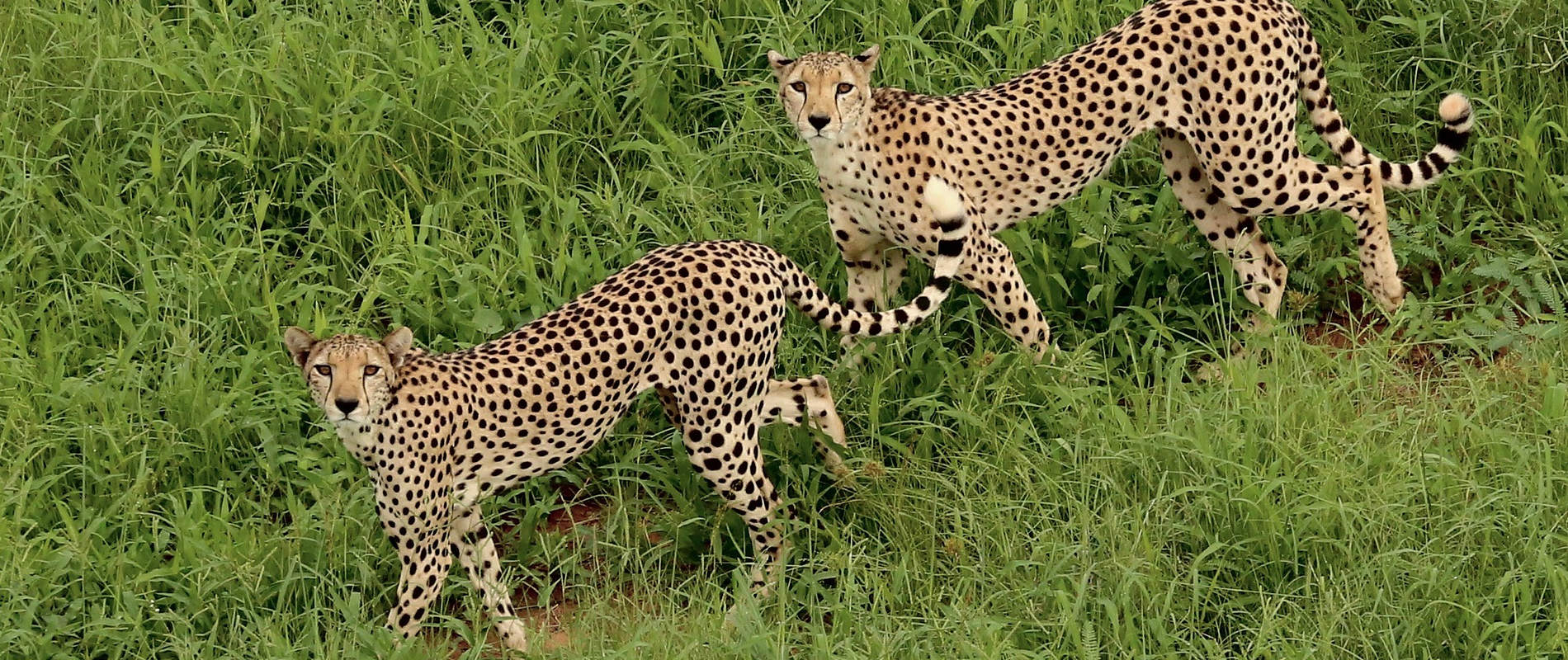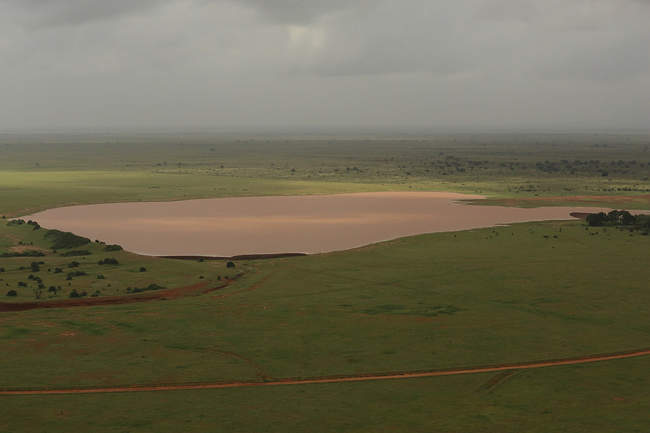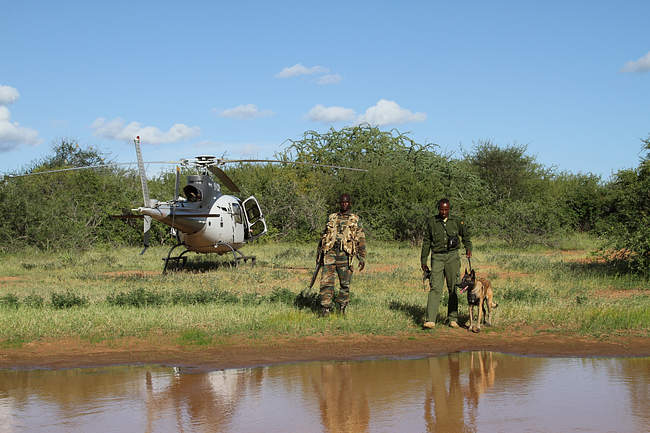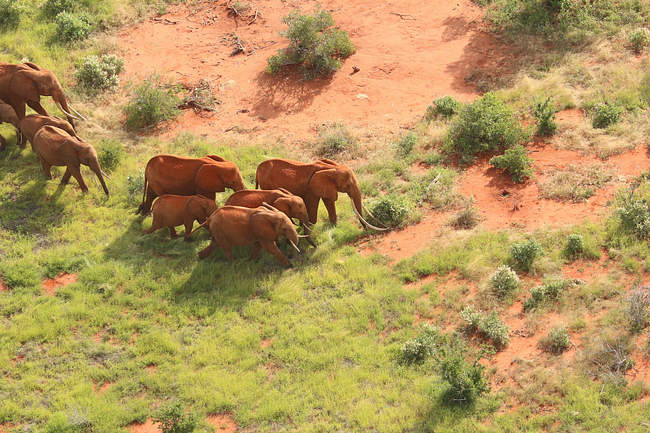December rains began looking promising but rather lost momentum towards the end of the month
Fortunately, there was heavy rain in the southern area of Tsavo East, where most of the elephant deaths due to starvation occurred late in 2017. During this period Aruba dam, originally built by David Sheldrick many years ago, filled for the first time in recent years, and hundreds of waterholes as well as a thick flush of vegetation in the area, brought relief to elephants and plains game that gathered there in large numbers. Also positive was the complete lack of new shooting blinds discovered this month compared to more than 20 blinds which were discovered the previous year in the same month.
The helicopters have also been instrumental in responding to numerous cases of human-elephant conflict (HEC) in farms bordering the Park this month. This time of the year is always difficult for farmers who watch in despair as elephants trample their crops, as due to a lack of land use policies many subsistence farms are situated on the migratory routes of elephants, or flush with the boundaries of the National Park.
One of the most remarkable cases attended to this month, aided by the Trust’s helicopter, was the treatment of a young male calf near Taita Salt Lick Sanctuary with a deeply imbedded cable snare around his neck; together with the DSWT ground teams, the DSWT funded Amboseli Veterinary Unit headed by KWS Dr Ephantus, managed to operate and remove the cable snare and treat the wound.
Highlights this month included 5 cheetahs sighted during two different flights, several rhinos and a calf, and a pack of wild dog attempting to hunt buffalo in Tsavo West.



